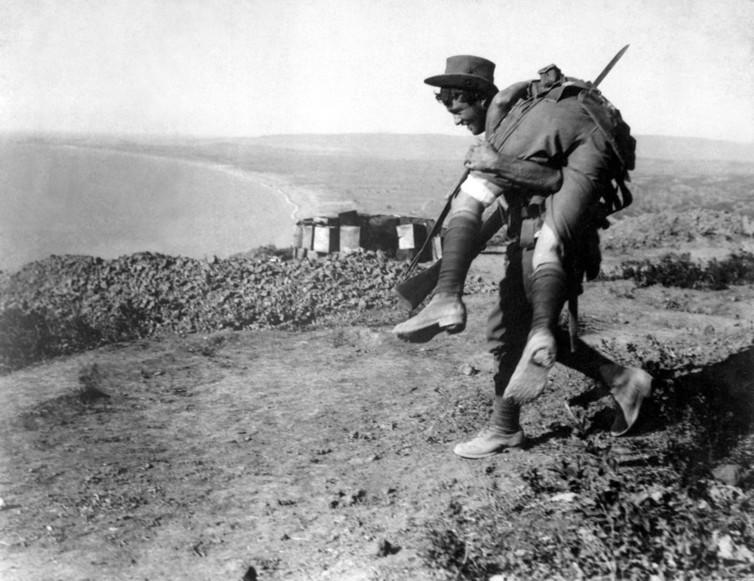Crime and conmen in the black out: the violent side of the World War I home front
As the commemorations for the centenary of the Battle of the Somme continue, it’s tempting to picture the Britain of 1914-1918 in a particular way: its inhabitants bonded together in a shared mission, brave men enduring hell in the trenches, women making munitions, families enduring the heartbreaking loss of loved ones. There’s much truth in this picture, but if we were to find ourselves back on the Home Front we’d quickly realise that among the endless war work and self-sacrifice, there was a lot going on that was not heroic.
In February 1915, The Times reported claims made at the Old Bailey that crime had fallen to its lowest level for 18 years – but few people believed it. In fact, during the war, London remained the country’s crime capital, particularly for violent crime.
The city acted as a stopping off point on the way to the Western Front with thousands of soldiers passing through every week. At the same time, burglars and conmen hadn’t suddenly become patriotic and suspended their activities, and not every potential criminal was safely in the armed forces. Pilfering was rife and so, too, was illegal drinking and gambling. The arrival of conscription in 1916 led to a brisk trade in fake medical exemption certificates.
Other observers worried about the massed ranks of prostitutes – professional and amateur – whom it was claimed were stalking the streets, spreading venereal disease. The following year the author Arthur Conan Doyle wrote to The Times warning of these women who “at present prey upon and poison our soldiers in London”.

Metropolitan Police records held at the National Archives in Kew give an insight into some of the offences which were known about during the war – and there were presumably others that weren’t. Some cases became famous, notably the “Brides in the Bath” case of June 1915, in which serial bigamist George Joseph Smith was revealed to have married, and then drowned, a succession of lonely women as a means of getting his hands on their money. Smith’s crimes shocked war-time Britain but also entertained it. The horrible details provided a distraction from the events of the war – the story broke in the middle of the Dardanelles campaign. Justice of sorts was served when, after a packed trial at the Old Bailey, Smith was hanged at Maidstone Prison.
Under cover of darkness
Other crimes were more obviously the result of war-time conditions. The night-time blackout, in particular, meant that streets were dark and dangerous. Records at the National Archives recount how on one evening in October 1915, 40-year-old Jessie Leary, a prostitute, was found sprawled on a pavement in Greenwich. She had last been seen drinking in a local pub and was thought to be intoxicated – but the policeman who discovered her saw that she was covered in blood. An autopsy found that her death was due to an internal haemorrhage caused after a broken bottle was inserted inside her. Despite being seen with an unknown man shortly before she was found, Jessie Leary’s killer was never caught.
Of more interest to the authorities were what newspapers termed “outrages on soldiers” – where the victims were brave men who were risking their lives for king and country. An attack in November 1916 on a Canadian soldier, Alfred Williams, flagged how helpless some of the men who had served on the Western Front actually were when faced with certain Londoners.
Williams and three other Canadians went into the Sussex pub in Long Acre, having arrived back from France. They fell into conversation with two women and Williams let slip that he was carrying some back pay, around £25. The Canadians bought some drinks and then the group was joined by two civilians, William Robinson, a shoemaker, and John Gray, a newspaper packer. Soon afterwards, two of the Canadians left accompanied by the two women.
Exactly what happened next is unclear. At 9pm Alfred Williams was found lying on St. Martin’s Lane, opposite Aldridge’s (a famous livestock dealer – now the site of Orion House). He was bleeding from a wound behind his ear and died at the scene. It did not take the police long to arrest Robinson and Gray. After a trial at the Old Bailey, Robinson was sentenced to hang and Gray received a three-year prison sentence.
Keep your wits about you

The protection of overseas soldiers in London became an ongoing challenge for the war-time authorities. Organisations like the YMCA helped by building huts where men could get a bed for the night. There was also a spate of specially written guidebooks. These aimed to put soldiers on the right track via walking tours which took in tourist attractions judged spiritually uplifting such as Nelson’s Column and the lions in Trafalgar Square.
One 1917 publication, The Guide to London for Soldiers and Sailors, contained a message from Field Marshall Sir John French in which he prayed that the book would:
Be the means of saving so many of our soldiers and sailors from the many pitfalls to which they are exposed on their way through London without proper guidance.
These pitfalls were real. Uncovering them again a century later reveals a darker side of the history of World War I which needs acknowledging if we want anything like a full picture of life on the Home Front.
This article was originally published on The Conversation. Read the original article.

Andrew Maunder receives funding from Arts and Humanities Research Council

 Yahoo News
Yahoo News 